
英文原版 Leonardo da Vinci 列奥纳多达芬奇传 英文版 进口英语原版书籍
书籍内容简介可联系客服查阅,查书找书开票同样可以联系客服
¥ 128 ¥ 128 九五品
库存81件
山东济南
认证卖家担保交易快速发货售后保障
作者Isaacson, Walter
出版社Simon & Schuster
ISBN9781501139161
出版时间2018-10
装帧平装
定价128元
货号YB-4217
上书时间2024-03-15
- 最新上架
商品详情
- 品相描述:九五品
- 商品描述
-
内容摘要
书名:Leonardo da Vinci列奥纳多·达·芬奇传 作者:Walter Isaacson 出版社名称:Simon & Schuster 出版时间:2017 语种:英文 ISBN:9781501139161 商品尺寸:15.5 x 4.8 x 23.5 cm 包装:平装 页数:624 (以实物为准) ★《史蒂夫·乔布斯传》作者力作,好莱坞高价竞得本书电影改编权,由“小李子”莱昂纳多饰演达芬奇; ★史蒂夫·乔布斯、比尔·盖茨崇拜的跨界创新奇才; ★《纽约时报》畅销书,比尔·盖茨撰文推荐; ★文艺复兴时期伟大的艺术家、科学家,人类想象力和创造力的巅峰。 列奥纳多·达·芬奇是文艺复兴时期伟大的艺术家和科学家,是影响了世界500多年的“网红”。达·芬奇能将艺术、科学、技术和想象力融为一体,同时,他能对自己稍显异类的状态泰然处之:私生子、同性恋、素食者、左撇子、容易分心……带着顽皮而执着的热情,达·芬奇孜孜不倦地投入对众多领域的创新与探索,包括解剖学、化石、鸟类、飞行器、光学、植物学、地质学、水流,以及军事装置。他的笔记不仅是对好奇心难以超过的纪录,而且是激动人心的指南;其跨学科的才华跃然纸上,带领我们去了解这个好奇心旺盛的人。 涌现了达·芬奇、哥伦布和古登堡的15世纪,是一个通过新技术发明,探索和传播知识的时代,就如我们现在身处的时代一样。达·芬奇的天才之处正是基于那些我们也可以通过自我训练提升的能力:热切的好奇心、认真的观察,以及异想天开的想象力。 美国著名的传记作家沃尔特·艾萨克森继畅销书《史蒂夫·乔布斯传》之后,出版了这本以达芬奇的笔记为起点的Leonardo da Vinci《列奥纳多·达·芬奇传》。作者以列奥纳多·达·芬奇令人震惊的7200页笔记,以及关于他的生平和作品的新发现为基础,用电影般的叙事娓娓道来。 这本传记将带你走近大师,探索他复杂的性格,重新认识这位奇才。你将读到一个更加完整的达·芬奇,既是天才达·芬奇,又是凡人达·芬奇。 媒体评论: “列奥纳多·达·芬奇在艺术和工程技术中都能发现美,而他将二者结合的能力让他成了天才。”——史蒂夫·乔布斯(Steve Jobs) 美国苹果公司创始人 “沃尔特·艾萨克森用我所见过的高超的方式,将达·芬奇生活的不同侧面娓娓道来,并且解释了是什么使他如此与众不同。”——比尔·盖茨(Bill Gates) 美国微软公司联合创始人 The #1 New York Times bestseller He was history’s most creative genius. What secrets can he teach us? The author of the acclaimed bestsellers Steve Jobs, Einstein, and Benjamin Franklin brings Leonardo da Vinci to life in this exciting new biography. Based on thousands of pages from Leonardo’s astonishing notebooks and new discoveries about his life and work, Walter Isaacson weaves a narrative that connects his art to his science. He shows how Leonardo’s genius was based on skills we can improve in ourselves, such as passionate curiosity, careful observation, and an imagination so playful that it flirted with fantasy. He produced the two most famous paintings in history, The Last Supper and the Mona Lisa. But in his own mind, he was just as much a man of science and technology. With a passion that sometimes became obsessive, he pursued innovative studies of anatomy, fossils, birds, the heart, flying machines, botany, geology, and weaponry. His ability to stand at the crossroads of the humanities and the sciences, made iconic by his drawing of Vitruvian Man, made him history’s most creative genius. His creativity, like that of other great innovators, came from having wide-ranging passions. He peeled flesh off the faces of cadavers, drew the muscles that move the lips, and then painted history’s most memorable smile. He explored the math of optics, showed how light rays strike the cornea, and produced illusions of changing perspectives in The Last Supper. Isaacson also describes how Leonardo’s lifelong enthusiasm for staging theatrical productions informed his paintings and inventions. Leonardo’s delight at combining diverse passions remains the ultimate recipe for creativity. So, too, does his ease at being a bit of a misfit: illegitimate, gay, vegetarian, left-handed, easily distracted, and at times heretical. His life should remind us of the importance of instilling, both in ourselves and our children, not just received knowledge but a willingness to question it—to be imaginative and, like talented misfits and rebels in any era, to think different. Review "Majestic . . . Isaacson takes on another complex, giant figure and transforms him into someone we can recognize. . . . Totally enthralling, masterful, and passionate."--Kirkus Reviews "Encompassing in its coverage, robust in its artistic explanations, yet written in a smart, conversational tone, this is both a solid introduction to the man and a sweeping saga of his genius."--Booklist "A fresh and enthusiastic reading of the extraordinary da Vinci notebooks, written in a way that makes them both accessible and contemporary. Absorbing, enlightening and always engaging." --Miranda Seymour, author of Mary Shelley "Illuminating . . . This is a monumental tribute to a titanic figure."--Publishers Weekly "Isaacson's essential subject is the singular life of brilliance… Isaacson deftly reveals an intimate Leonardo… a masterpiece of concision."--San Francisco Chronicle "Monumental… Leonardo led an astonishingly interesting eventful life. And Isaacson brilliantly captures its essence."--The Toronto Star 数百年来,人们一直对天赋异秉的达·芬奇充满好奇,众所周知,这位意大利巨匠堪称人类历史上的艺术家,他对自己的作品极为严苛,也善于把握机遇,却是个喜欢不时搞点恶作剧的人。尽管服务于宫廷贵族,设计筹备了各种饕餮盛宴,自身却是一位素食主义者。 他剥去尸体面部的皮肉,绘制嘴唇运动的肌肉,然后在《蒙娜丽莎》的脸上画出了历史上令人难忘的笑容;他探索光学的数学原理,阐明光线如何照射在视网膜上,然后制造出了《zui后的晚餐》中视觉变换的错觉,他毕生对舞台演出的热爱也促进了绘画和发明创造。他的人生提醒我们:无论是我们自己,还是我们的孩子,都不应止于吸收知识,更要去质疑,要充满想象力,敢于不同凡“想”,就像任何时代的“异类”天才和创新者一样。 沃尔特·艾萨克森(Walter Isaacson),美国著名传记作家,畅销书《史蒂夫?乔布斯传》、《富兰克林传》、《爱因斯坦传》、《创新者》的作者。他毕业于哈佛大学,是杜兰大学历史系校聘教授,历任美国阿斯彭研究所(Aspen Institute)首席执行官,曾任美国《时代周刊》总编辑和美国有线电视新闻网(CNN)董事长。 Walter Isaacson,University Professor of History at Tulane, has been CEO of the Aspen Institute, chairman of CNN, and editor of Time magazine. He is the author of Leonardo da Vinci; The Innovators; Steve Jobs; Einstein: His Life and Universe; Benjamin Franklin: An American Life; and Kissinger: A Biography, and the coauthor of The Wise Men: Six Friends and the World They Made. Leonardo da Vinci had the good luck to be born out of wedlock. Otherwise, he would have been expected to become a notary, like the firstborn legitimate sons in his family stretching back at least five generations. His family roots can be traced to the early 1300s, when his great-great-great-grandfather, Michele, practiced as a notary in the Tuscan hill town of Vinci, about seventeen miles west of Florence.I With the rise of Italy’s mercantile economy, notaries played an important role drawing up commercial contracts, land sales, wills, and other legal documents in Latin, often garnishing them with historical references and literary flourishes. Because Michele was a notary, he was entitled to the honorific “Ser” and thus became known as Ser Michele da Vinci. His son and grandson were even more successful notaries, the latter becoming a chancellor of Florence. The next in line, Antonio, was an anomaly. He used the honorific Ser and married the daughter of a notary, but he seems to have lacked the da Vinci ambition. He mostly spent his life living off the proceeds from family lands, tilled by sharecroppers, that produced a modest amount of wine, olive oil, and wheat. Antonio’s son Piero made up for the lassitude by ambitiously pursuing success in Pistoia and Pisa, and then by about 1451, when he was twenty-five, establishing himself in Florence. A contract he notarized that year gave his work address as “at the Palazzo del Podestà,” the magistrates’ building (now the Bargello Museum) facing the Palazzo della Signoria, the seat of government. He became a notary for many of the city’s monasteries and religious orders, the town’s Jewish community, and on at least one occasion the Medici family. On one of his visits back to Vinci, Piero had a relationship with an unmarried local peasant girl, and in the spring of 1452 they had a son. Exercising his little-used notarial handwriting, the boy’s grandfather Antonio recorded the birth on the bottom of the last page of a notebook that had belonged to his own grandfather. “1452: There was born to me a grandson, the son of Ser Piero my son, on the 15th day of April, a Saturday, at the third hour of the night [about 10 p.m.]. He bears the name Leonardo.” Leonardo’s mother was not considered worth mentioning in Antonio’s birth notation nor in any other birth or baptism record. From a tax document five years later, we learn only her first name, Caterina. Her identity was long a mystery to modern scholars. She was thought to be in her mid-twenties, and some researchers speculated that she was an Arab slave, or perhaps a Chinese slave. In fact, she was an orphaned and impoverished sixteen-year-old from the Vinci area named Caterina Lippi. Proving that there are still things to be rediscovered about Leonardo, the art historian Martin Kemp of Oxford and the archival researcher Giuseppe Pallanti of Florence produced evidence in 2017 documenting her background.4 Born in 1436 to a poor farmer, Caterina was orphaned when she was fourteen. She and her infant brother moved in with their grandmother, who died a year later, in 1451. Left to fend for herself and her brother, Caterina had a relationship in July of that year with Piero da Vinci, then twenty-four, who was prominent and prosperous. 1234567
— 没有更多了 —

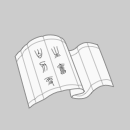

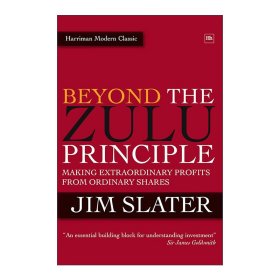
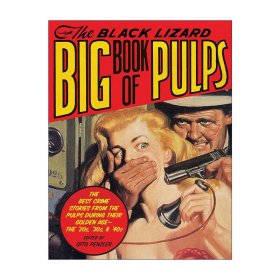

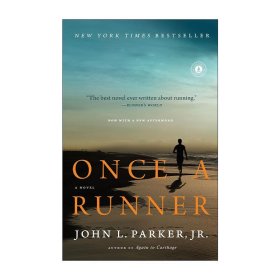
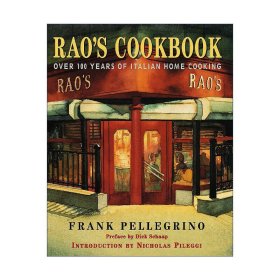

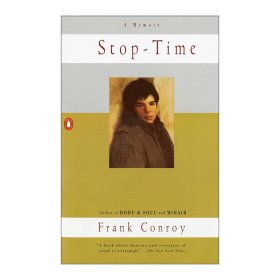
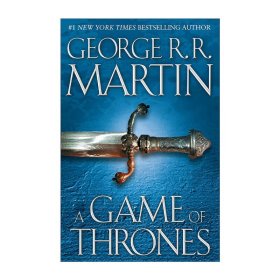

以下为对购买帮助不大的评价